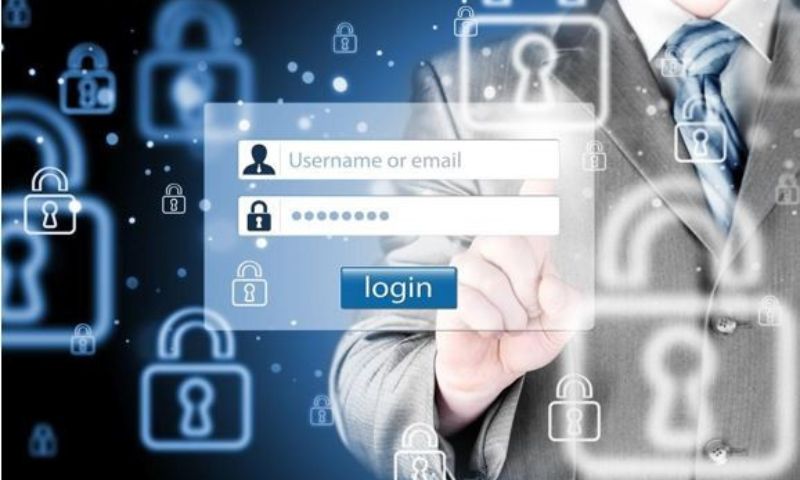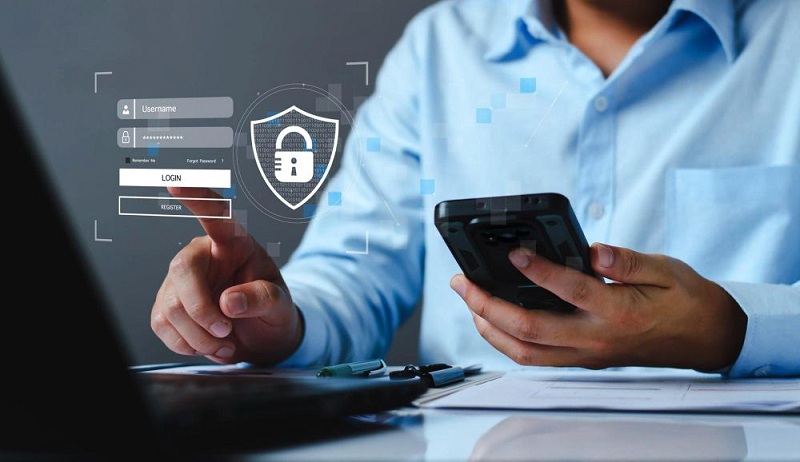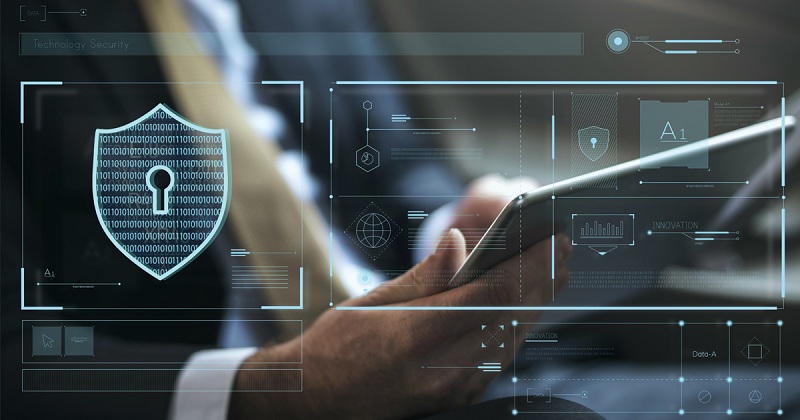How to Enable 2FA on Crypto Wallets: Your Ultimate Security Guide
You’ve got crypto, and thieves want it. Lock them out by learning how to enable 2FA on crypto wallets. It’s like adding a beefy deadbolt to your digital vault. I’ll guide you step-by-step to ramp up your wallet’s defenses. No tech wizard needed, just follow my lead and make your crypto untouchable!
Understanding 2FA and Its Importance for Crypto Wallets
Exploring the Benefits of Two-Factor Authentication for Secure Crypto Storage
Two-factor authentication (2FA) adds an extra check to keep your crypto safe. Picture a guard that asks for a secret code before letting anyone into a treasure room. That’s what 2FA does. It makes sure you’re the only one who can access your digital money.
With 2FA, bad guys can’t get in, even if they know your password. It’s like a double lock on your money. This safety step is key because it protects your coins from thieves.
Dissecting Types of 2FA: Google Authenticator, SMS, and Hardware Tokens
Let’s break down 2FA types. Google Authenticator is an app that gives you a code that changes all the time. You use the new code each time you log in. It’s free and easy to set up. Download it, link it to your wallet, and you’re good to go. But remember to keep your code secret!
SMS 2FA sends you a text with a code when you log in. It’s simple. But texts can be intercepted, so it’s less safe than other types. Be careful with this one!
Hardware tokens are physical gadgets like YubiKey. They’re super secure. You plug them in to prove it’s you. No one can fake this. It’s great for keeping big amounts of crypto locked down.
So, we have Google Authenticator for quick, no-cost protection. SMS for ease but with a bit less security. And hardware tokens for top-notch safety. Each can help secure your crypto, but some are stronger than others. Choose what fits best for how much safety you want and what gear you already have.
Setting Up 2FA on Different Types of Crypto Wallets
Enabling 2FA on Software Wallets for Enhanced Security
To make your software wallet safe, start by setting up 2FA. It’s like a guard for your digital coins. Two-factor authentication adds a security layer. It keeps hackers away. Imagine two locks on a door; it’s tougher to break.
First, check if your wallet has 2FA. Most do. Find the security settings menu. This is where you set it up. Choose an app like Google Authenticator. This app gives a one-time code. You must use it to log in to your wallet. It changes every few minutes. It’s like magic numbers that protect your coins.
Scan the QR code on screen with the 2FA app. This links your wallet and the app. Now, each time you log in, you need two things. Your password and the code from your app.
Write down the backup codes given. Store them safe. They are your key if your phone gets lost.
Remember, using SMS for 2FA isn’t as safe. Hackers can trick phone companies. They can steal your SMS code. Apps like Google Authenticator are tougher to hack.
Integrating Two-Factor Authentication in Hardware Wallets like Ledger and Trezor
A hardware wallet is like a safe. It stores your crypto offline. This means hackers can’t touch it through the internet. But you can add another layer with 2FA.
For Ledger or Trezor, first, plug in your wallet. Use the USB port on your computer. Then, open the wallet’s app or interface. Go to the security section. It’s like opening a dashboard for your safe.
Select the 2FA option. Again, use an app, not SMS. Apps are harder to break into. Sync your wallet to the app with a QR code. It’s quick and easy. Each time you make a transaction, you’ll need your code.
Some hardware wallets use a pin code for 2FA. You make this pin when you set up the wallet. Keep this pin secret. Never share it. If someone learns your pin, they can steal your crypto.
For extra safety, use a YubiKey with your hardware wallet. It’s a physical key for your digital coins. You plug it into your computer. It checks your identity. It’s like showing ID before opening your safe.
Great security matters. It keeps your crypto safe. Setting up 2FA takes effort. But losing your digital currency is worse. Protect it with two-factor authentication.
After setting up 2FA, keep your recovery codes and backup methods current. If you get locked out, these are your lifeline. Keep learning about security. Follow best practices. This way, your crypto stays in your hands. It’s worth the peace of mind.
Protecting your digital currency is critical. With these tips, you’re taking a huge step to secure your crypto wallet. Enjoy the added safety that 2FA provides.
Advanced 2FA Options and Best Practices for Maximum Security
Biometric and Security Keys: Taking Crypto Wallet Security to the Next Level
We all want our digital cash safe, right? Let’s talk about how. Biometric 2FA uses your body’s unique signs (like your fingerprint or face) to check it’s really you. Think of it as a secret handshake between you and your wallet. This stops hackers because only you have your fingerprint, for example. It’s like your wallet can give a high five to only you. You can set this up in many wallets that support biometric 2FA.
What if you want even more safety? Get a security key. This tool is a kind of special USB. When you plug it into your device, it proves that it’s you trying to get in. Pair this with a password and you are super secure. Security keys are great against phishing – they’re a strong lock on your valuables.
Mastering Multi-Factor Authentication: Layering Your Security
Now, multi-factor authentication means using more than one check to prove who you are. Imagine your crypto as treasure in a castle. You don’t want just one gate to protect it. You want a moat, a gate, and tower guards. For crypto, this is like using a password, then a code from an app like Google Authenticator, and perhaps a biometric check.
Also, don’t forget about backup. Write down backup codes or use a secure app to store them. If you lose your phone, you’ll thank yourself. You don’t want to be locked out of your own wealth, right?
Keep all these layers in mind and you are on your way to being a crypto fortress. Remember, great security is about making layers that work together. Crypto pirates don’t stand a chance!
So, let’s recap easy steps for tough security:
- Use biometrics if you can. Your body is the key.
- Carry a security key as a backup plan. It’s like a strong buddy for your password.
- Layer up. Use many ways to check who you are.
- Make a backup. Write down or use an app for your backup codes.
There you go! Follow these and sleep well knowing your digital coins are tucked in safe and sound.
Maintaining Access and Troubleshooting 2FA on Crypto Wallets
Managing Backup Methods for 2FA Codes and Recovery Processes
When you set up 2FA, always back up your codes. If you lose your phone, these codes let you into your wallet. Write them down or print them. Keep them safe like cash or jewelry.
To recover 2FA codes, use the backup codes from the setup time. If you lose those, contact wallet support fast. They’ll start a secure process to prove it’s you and help you reset 2FA.
For a hardware wallet like Ledger, backup is crucial. Write down the recovery seed and store it in two places, like a safe and with a trusted person.
If you use Google Authenticator for your wallet, switch phones carefully. Transfer your accounts to the new device. For a mobile wallet with 2FA, check if there’s a cloud backup option.
Handling Common Issues with 2FA and Steps to Safeguard against Phishing Attempts
Have trouble with your 2FA codes? Check the time sync in your authentication app. Google Authenticator needs the correct time to work.
Phishing is a big threat. Fake sites or emails pretend to be your wallet provider. Always double-check URLs and email addresses.
When enabling 2FA on Ethereum or any other wallet, avoid SMS if you can. Hackers can redirect text messages. Use an app or a security key for better protection.
Got a new phone? Move your 2FA with care. Start the setup process again on the new phone for apps like Google Authenticator. Re-enable 2FA on each crypto account.
The YubiKey is a physical 2FA device. It’s secure but don’t lose it. Have a backup method. This way, you can still get into your wallet if the key is lost.
If you ever face a 2FA issue, act fast. Contact support, or follow recovery steps. Quick action keeps your digital currency safe. Multi-factor authentication layers shield you from many risks. Adding a security key or using biometric 2FA adds strong barriers against intruders.
In this post, we’ve covered how 2FA shields your crypto wallets. We looked at its key benefits and how it can stop hackers. You saw types like Google Authenticator and SMS, and hardware tokens too. Then, we dived into setting up 2FA on software and hardware wallets, such as Ledger and Trezor. We explored top-notch options like biometrics and security keys, and the power of multi-layered security tactics. Lastly, we tackled maintaining access, backup methods for your codes, and how to deal with common 2FA problems and phishing traps.
I believe that understanding and using 2FA can make or break the safety of your digital wealth. Don’t slack off; use these insights to lock down your crypto with strong, multi-layered defense. Stay sharp and be the guard of your own digital treasure chest!
Q&A :
How do I set up two-factor authentication on my cryptocurrency wallet?
To enable two-factor authentication (2FA) on your cryptocurrency wallet, start by accessing the security settings within your wallet application or platform. Look for a 2FA option, which might be labeled as “Two-Factor Authentication” or “Extra Security.” You will typically have the choice to use an authentication app, such as Google Authenticator or Authy, or a hardware device. Follow the provided steps to link your wallet to the chosen 2FA method by scanning a QR code or entering a setup key. Finally, confirm that the 2FA is active and functional by performing a test authentication.
What are the benefits of using 2FA with crypto wallets?
Enhancing your crypto wallet security with two-factor authentication provides an additional protection layer against unauthorized access. Even if someone obtains your password, they would still require the second factor—something you have, like a mobile device with an authentication app or a hardware token—to gain access. This significantly reduces the risk of account breaches, identity theft, and potential financial loss due to hacking or phishing attempts.
Can I still access my crypto wallet if I lose my 2FA device?
If you lose your two-factor authentication device, you may be able to regain access to your crypto wallet through backup methods, which should have been established when setting up 2FA. Most wallets offer backup codes, an alternative mobile number, or even the option to disable 2FA temporarily with customer support’s help. It is crucial to store these backups in a secure place to ensure that you can recover your account in such situations.
Is two-factor authentication required for all cryptocurrency wallets?
While two-factor authentication is not a mandatory feature on all cryptocurrency wallets, it is highly recommended. Many reputable wallets either have 2FA built-in or offer it as an optional security enhancement. Considering the increasing sophistication of cyber threats, activating 2FA is a prudent decision to better secure your digital assets.
What should I do if my 2FA codes are not working when accessing my crypto wallet?
If you encounter issues with your 2FA codes while trying to access your crypto wallet, ensure that the time on your authentication device is accurately synchronized. Time-based one-time passwords (TOTPs) rely on accurate timekeeping. If issues persist, consult the wallet’s support documentation or contact customer service for assistance. In case you’ve lost access to your authentication device, use one of your backup methods to regain access and troubleshoot further.


